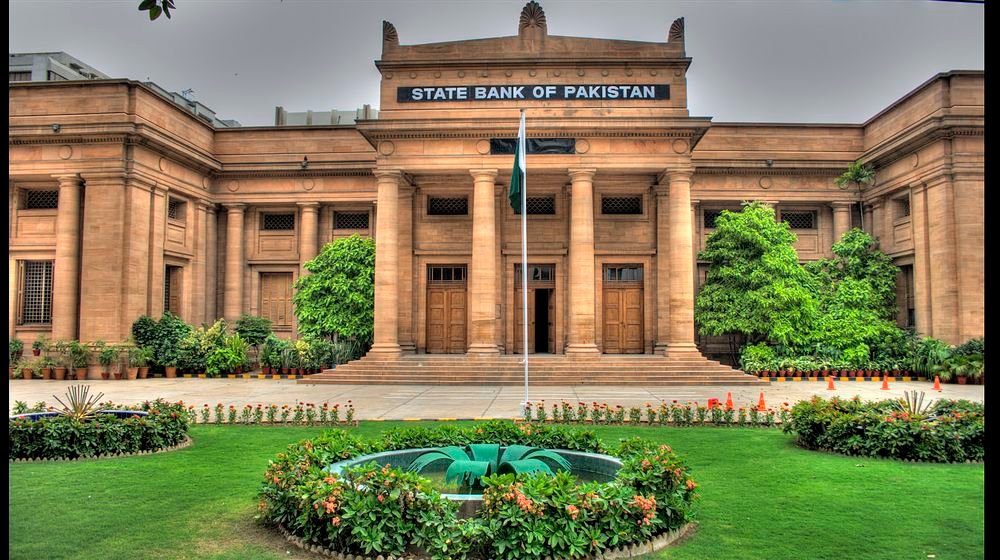
The State Bank of Pakistan (SBP) has decided to maintain its benchmark interest rate at 11%, marking the fourth consecutive meeting in which the Monetary Policy Committee (MPC) has chosen to pause monetary easing. The central bank last lowered the rate by one percentage point in May 2025.
The MPC noted that while the overall economic outlook has improved, lingering risks—such as global commodity volatility, evolving tariff structures, and domestic food supply pressures—continue to warrant a cautious stance.
Inflation and Economic Outlook
Headline inflation rose to 5.6% in September, up from 3% in August, while core inflation remained stable at 7.3%. The committee highlighted that the economic impact of recent floods has been less severe than anticipated, with crop losses contained and industrial momentum strengthening.
The SBP expects inflation to temporarily exceed its 5–7% target band in the second half of FY26 before stabilising within range by FY27. Revised data from the Pakistan Bureau of Statistics (PBS) showed GDP growth for FY25 improving to 3.0% from 2.7%, while foreign exchange reserves rose to $14.5 billion as of October 17, even after a $500 million Eurobond repayment.
IMF Agreement and External Sector
Pakistan has reached a staff-level agreement with the IMF under the Extended Fund Facility (EFF) and Resilience and Sustainability Facility (RSF)—a development expected to boost investor confidence and macroeconomic stability.
The current account recorded a $110 million surplus in September 2025, limiting the FY26 first-quarter deficit to $594 million. Exports grew modestly, while rising imports widened the trade gap. However, remittances remained resilient, underpinning external stability.
The SBP projects the current account deficit for FY26 between 0–1% of GDP, with reserves expected to reach $15.5 billion by December 2025 and $17.8 billion by June 2026, contingent on planned inflows.
Growth Momentum and Fiscal Position
High-frequency indicators show growing momentum in the economy. Large-Scale Manufacturing (LSM) grew 4.4% year-on-year in July–August FY26, compared to a contraction a year earlier. The rise in automobile, cement, fertiliser, and petroleum product sales indicates renewed industrial activity, which is likely to spill over into the services sector.
On the fiscal side, tax revenues increased 12.5% year-on-year to Rs2.9 trillion in Q1-FY26, though slightly below target. The central bank expects both the overall and primary fiscal balances to post surpluses, while urging continued fiscal discipline to ensure long-term sustainability.
Private Sector Trends
Broad money (M2) growth decelerated to 12.3% as of mid-October, while private-sector credit expanded 17%, reflecting confidence across sectors such as textiles, telecoms, chemicals, and retail. The SBP noted that the real policy rate remains positive, supporting its inflation target despite ongoing uncertainty in energy prices and food supply dynamics.
Expert Opinions
Speaking exclusively to The Scoop, Economist Dr. Aima Mehdi termed the SBP’s decision “overly cautious,” arguing that a modest rate cut could have provided a timely boost to economic activity.
“Headline inflation will rise due to global pressure on oil markets and the ongoing US–Russia trade tensions,” she said. “Pakistan’s GDP growth is already below expectations, and the economy hasn’t yet seen the full impact of the monetary easing announced in May. Multinational investment and FDI inflows remain weak, and while the IMF agreement provides short-term relief, it’s still a loan—one that Pakistan currently lacks the means to repay.”
Dr. Mehdi added that in her view, “the policy rate should have been reduced by 0.5 to 1 percent,” pointing to persistently low exports, weak employment, and sluggish overall growth.
Economist Hina Ayra, meanwhile, described the SBP’s decision as a “prudent balancing act” between inflation control and growth support.
“After a brief rate cut in May, the SBP appears committed to consolidating macroeconomic improvements rather than pursuing aggressive easing,” she noted. “Headline inflation, though moderate, underscores the risk of renewed pressures from global commodity volatility. The focus on maintaining a positive real interest rate and anchoring expectations is consistent with a stabilisation strategy.”She added that while foreign exchange reserves have improved and IMF support has bolstered confidence, “external stability still relies more on remittances and controlled demand than on an export-led recovery.”
Awais Ashraf, CFA, Director Research at AKD Securities Limited, called the central bank’s stance “a well-measured decision” based on the improving macroeconomic environment.
“The SBP’s position reflects both caution and optimism,” Ashraf said. “The upward revision in anticipated growth and consistent build-up in foreign exchange reserves are encouraging. The impact of floods has been far milder than initially feared, allowing for better growth momentum.”
Adding an industry perspective, APTMA Chairman Kamran Arshad warned that challenges persist despite the stabilising indicators.
“All is not well for the economy as such due to massive capital outflow and lack of foreign investment,” he said, stressing the need for policy consistency and investor-friendly reforms to stimulate industrial output and exports.
Collectively, the experts signalled cautious optimism — noting that while the SBP’s decision strengthens short-term stability, sustainable recovery will depend on structural reforms in taxation, energy pricing, and industrial productivity.








